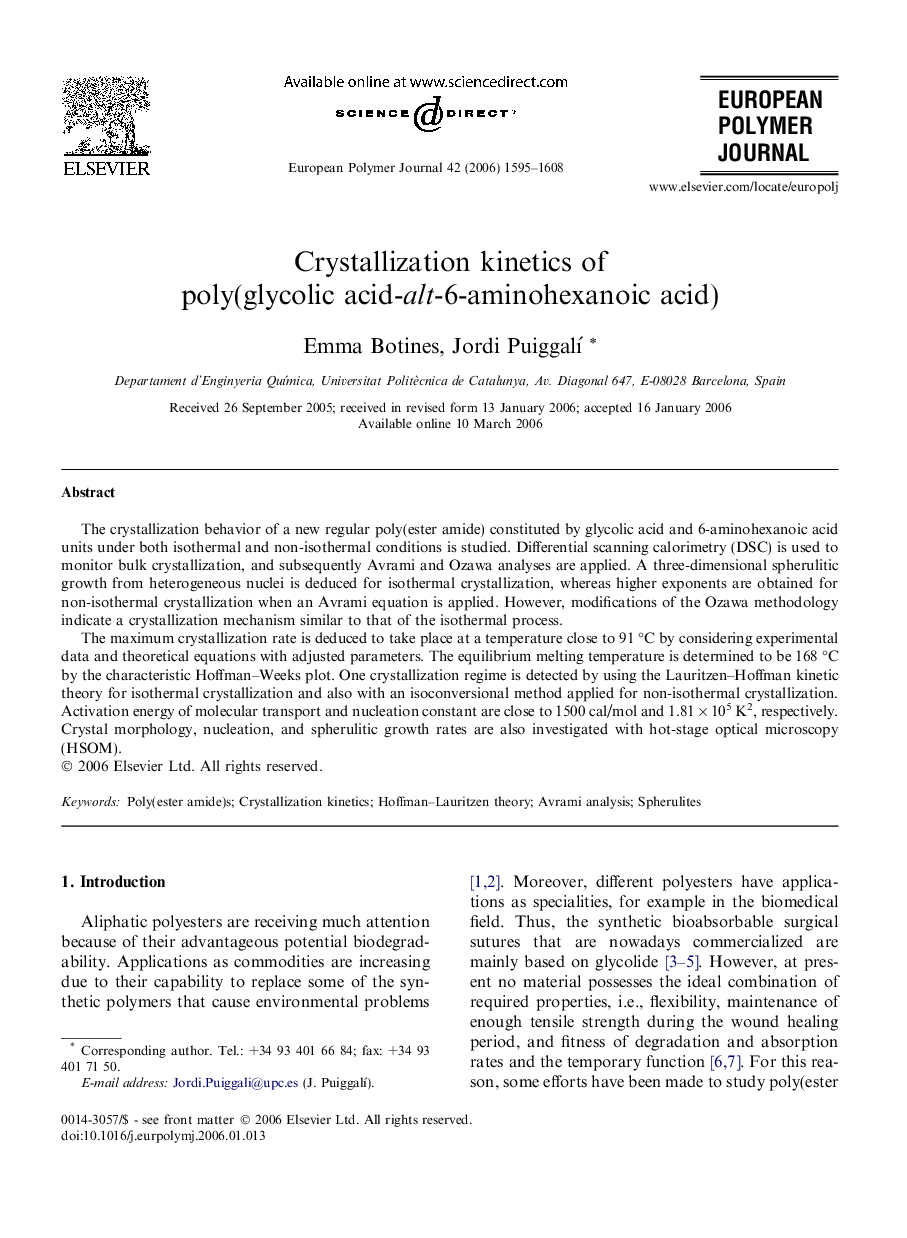| Article ID | Journal | Published Year | Pages | File Type |
|---|---|---|---|---|
| 1401249 | European Polymer Journal | 2006 | 14 Pages |
The crystallization behavior of a new regular poly(ester amide) constituted by glycolic acid and 6-aminohexanoic acid units under both isothermal and non-isothermal conditions is studied. Differential scanning calorimetry (DSC) is used to monitor bulk crystallization, and subsequently Avrami and Ozawa analyses are applied. A three-dimensional spherulitic growth from heterogeneous nuclei is deduced for isothermal crystallization, whereas higher exponents are obtained for non-isothermal crystallization when an Avrami equation is applied. However, modifications of the Ozawa methodology indicate a crystallization mechanism similar to that of the isothermal process.The maximum crystallization rate is deduced to take place at a temperature close to 91 °C by considering experimental data and theoretical equations with adjusted parameters. The equilibrium melting temperature is determined to be 168 °C by the characteristic Hoffman–Weeks plot. One crystallization regime is detected by using the Lauritzen–Hoffman kinetic theory for isothermal crystallization and also with an isoconversional method applied for non-isothermal crystallization. Activation energy of molecular transport and nucleation constant are close to 1500 cal/mol and 1.81 × 105 K2, respectively. Crystal morphology, nucleation, and spherulitic growth rates are also investigated with hot-stage optical microscopy (HSOM).
